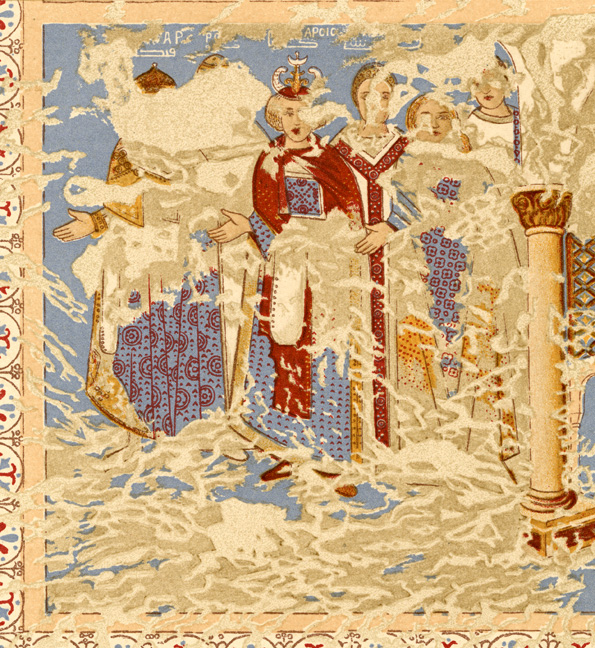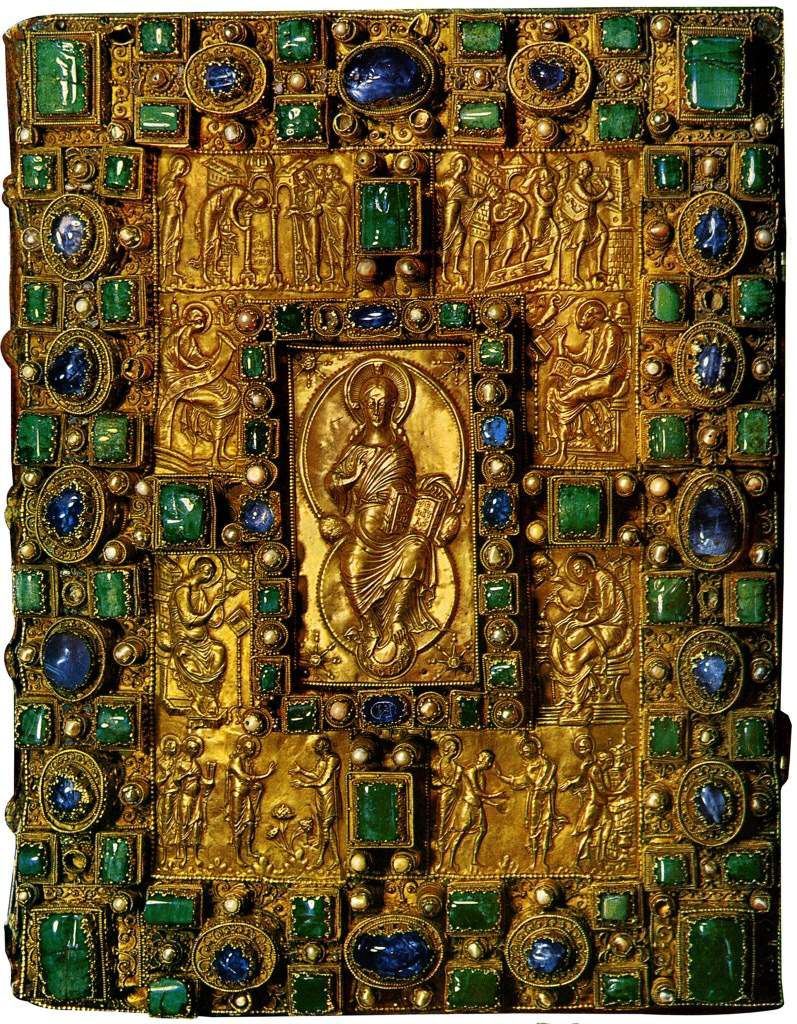|
History Of Smallpox
The history of smallpox extends into pre-history. Genetic evidence suggests that the smallpox virus emerged 3,000 to 4,000 years ago. Prior to that, similar ancestral viruses circulated, but possibly only in other mammals, and possibly with different symptoms. Only a few written reports dating from about 500–1000 CE are considered reliable historical descriptions of smallpox, so understanding of the disease prior to that has relied on genetics and archaeology. However, during the second millennium, especially starting in the 16th century, reliable written reports become more common. The earliest physical evidence of smallpox is found in the Egyptian mummies of people who died some 3,000 years ago. Smallpox has had a major impact on world history, not least because indigenous populations of regions where smallpox was non-native, such as the Americas and Australia, were rapidly and greatly reduced by smallpox (along with other introduced diseases) during periods of initial foreign ... [...More Info...] [...Related Items...] OR: [Wikipedia] [Google] [Baidu] |
Theodore Mommsen
Christian Matthias Theodor Mommsen (; ; 30 November 1817 – 1 November 1903) was a Germans, German classics, classical scholar, historian, jurist, journalist, politician and archaeologist. He is widely regarded as one of the greatest classicists of the 19th century. He received the 1902 Nobel Prize in Literature for his historical writings, including ''The History of Rome (Mommsen), The History of Rome'', after having been nominated by 18 members of the Prussian Academy of Sciences. He was also a prominent German politician, as a member of the Prussian and German parliaments. His works on Roman law and on the law of obligations had a significant impact on the Bürgerliches Gesetzbuch, German civil code. Life Mommsen was born to German parents in Garding in the Duchy of Schleswig in 1817, then ruled by the king of Denmark, and grew up in Bad Oldesloe in Holstein, where his father was a Lutheranism, Lutheran minister. He studied mostly at home, though he attended the Gymnasium ... [...More Info...] [...Related Items...] OR: [Wikipedia] [Google] [Baidu] |
735–737 Japanese Smallpox Epidemic
The was a smallpox epidemic that afflicted much of Japan. Killing approximately one third (around 1 million individuals) of the entire Japanese population, the epidemic had significant social, economic, and religious repercussions throughout the country. Origins A few decades prior to the outbreak, Japanese court officials had adopted the Chinese policy of reporting disease outbreaks among the general population. This recording practice greatly facilitated the identification of smallpox as the disease that afflicted Japan during the years 735–737. Increased contact and trade between Japan and the Asian mainland, directly and through Korea, had led to more frequent and serious outbreaks of infectious diseases, including smallpox. The smallpox epidemic of 735–737 was recorded as having taken hold around August 735 in the city of Dazaifu, Fukuoka in northern Kyushu. The infection had ostensibly been carried by a shipwrecked Japanese fisherman who had contracted the illness a ... [...More Info...] [...Related Items...] OR: [Wikipedia] [Google] [Baidu] |
Umayyad Conquest Of Hispania
The Muslim conquest of the Iberian Peninsula (; 711–720s), also known as the Arab conquest of Spain, was the Umayyad Caliphate, Umayyad conquest of the Visigothic Kingdom, Visigothic Kingdom of Hispania in the early 8th century. The conquest resulted in the end of Christianity, Christian rule in most of Iberia and the establishment of Muslims, Muslim Arab world, Arab-Moors, Moorish rule in that territory, which came to be known as al-Andalus, under the Umayyad dynasty. During the caliphate of the sixth Umayyad caliph al-Walid I (), military commander Tariq ibn Ziyad departed from North Africa in early 711 to cross the Straits of Gibraltar, with a force of about 1,700 men, to launch a military expedition against the Visigothic Kingdom, Visigoth-controlled Kingdom of Toledo, Spain, Toledo, which encompassed the former territory of Roman Hispania. After defeating king Roderic at the Battle of Guadalete in July the same year, Tariq was reinforced by an Arabs, Arab force led by his s ... [...More Info...] [...Related Items...] OR: [Wikipedia] [Google] [Baidu] |
Gregory Of Tours
Gregory of Tours (born ; 30 November – 17 November 594 AD) was a Gallo-Roman historian and Bishop of Tours during the Merovingian period and is known as the "father of French history". He was a prelate in the Merovingian kingdom, encompassing Gaul's historic region. Gregory's most notable work is the ('Ten Books of Histories'), also known as the ('History of the Franks'). is considered a primary source for the study of Merovingian history and chronicles the accounts of the Franks during the period. Gregory is also known for documenting accounts of religious figures, notably that of Martin of Tours. Biography Gregory was born in Clermont, in the Auvergne region of central Gaul. He was born into the upper stratum of Gallo-Roman society as the son of Florentius, Senator of Clermont, by his wife Armentaria II, niece of Bishop Nicetius of Lyon and granddaughter of both Florentinus, Senator of Geneva, and Saint Gregory of Langres. Relatives of Gregory held the Bishopr ... [...More Info...] [...Related Items...] OR: [Wikipedia] [Google] [Baidu] |
Western Europe
Western Europe is the western region of Europe. The region's extent varies depending on context. The concept of "the West" appeared in Europe in juxtaposition to "the East" and originally applied to the Western half of the ancient Mediterranean world, the Latin West of the Roman Empire, and "Western Christendom". Beginning with the Renaissance and the Age of Discovery, roughly from the 15th century, the concept of ''Europe'' as "the Western world, West" slowly became distinguished from and eventually replaced the dominant use of "Christendom" as the preferred endonym within the area. By the Age of Enlightenment and the Industrial Revolution, the concepts of "Eastern Europe" and "Western Europe" were more regularly used. The distinctiveness of Western Europe became most apparent during the Cold War, when Europe was divided for 40 years by the Iron Curtain into the Western Bloc and Eastern Bloc, each characterised by distinct political and economical systems. Historical divisions ... [...More Info...] [...Related Items...] OR: [Wikipedia] [Google] [Baidu] |
Early Middle Ages
The Early Middle Ages (or early medieval period), sometimes controversially referred to as the Dark Ages (historiography), Dark Ages, is typically regarded by historians as lasting from the late 5th to the 10th century. They marked the start of the Middle Ages of History of Europe, European history, following the decline of the Roman Empire, decline of the Western Roman Empire, and preceding the High Middle Ages ( 11th to 14th centuries). The alternative term ''Late antiquity#Terminology, late antiquity'', for the early part of the period, emphasizes elements of continuity with the Roman Empire, while ''Early Middle Ages'' is used to emphasize developments characteristic of the earlier medieval period. The period saw a continuation of trends evident since late classical antiquity, including population decline, especially in urban centres, a decline of trade, Medieval Warm Period, a small rise in average temperatures in the North Atlantic region and Migration Period, increased m ... [...More Info...] [...Related Items...] OR: [Wikipedia] [Google] [Baidu] |
Hinduism
Hinduism () is an Hypernymy and hyponymy, umbrella term for a range of Indian religions, Indian List of religions and spiritual traditions#Indian religions, religious and spiritual traditions (Sampradaya, ''sampradaya''s) that are unified by adherence to the concept of ''dharma'', a Ṛta, cosmic order maintained by its followers through rituals and righteous living, as expounded in the Vedas. The word ''Hindu'' is an exonym, and while Hinduism has been called the oldest religion in the world, it has also been described by the modern term ''Sanātana Dharma'' () emphasizing its eternal nature. ''Vaidika Dharma'' () and ''Arya dharma'' are historical endonyms for Hinduism. Hinduism entails diverse systems of thought, marked by a range of shared Glossary of Hinduism terms, concepts that discuss God in Hinduism, theology, Hindu mythology, mythology, among other topics in Hindu texts, textual sources. Hindu texts have been classified into Śruti () and Smṛti (). The major Hin ... [...More Info...] [...Related Items...] OR: [Wikipedia] [Google] [Baidu] |
Shitala Devi
Shitala (, IAST: ) , also spelled as Sheetala, śītalā and Seetla, is a Hindu goddess venerated primarily in North India. She is regarded to be an incarnation of the goddess Parvati. She is believed to cure poxes, sores, ghouls, pustules, and diseases, and most directly linked with the disease smallpox. Shitala is worshipped on Tuesday Saptami and Ashtami (the seventh and eighth day of a Hindu month), especially after Holi during the month of Chaitra. The celebration of the goddess Shitala on the seventh and eighth day of the Hindu month is referred to as the Sheetala Saptami and Sheetala Asthami, respectively. Mythology The deity is typically depicted as a mother who defends children from paediatric ailments, such as exanthemata and smallpox. She also serves as a fertility goddess that assists women in finding good husbands and conceiving healthy children. Her auspicious presence promises the welfare of the family and is considered to protect the devotee's sources of liveli ... [...More Info...] [...Related Items...] OR: [Wikipedia] [Google] [Baidu] |
Pustule
A skin condition, also known as cutaneous condition, is any medical condition that affects the integumentary system—the organ system that encloses the body and includes skin, nails, and related muscle and glands. The major function of this system is as a barrier against the external environment. Conditions of the human integumentary system constitute a broad spectrum of diseases, also known as dermatoses, as well as many nonpathologic states (like, in certain circumstances, melanonychia and racquet nails). While only a small number of skin diseases account for most visits to the physician, thousands of skin conditions have been described. Classification of these conditions often presents many nosological challenges, since underlying causes and pathogenetics are often not known. Therefore, most current textbooks present a classification based on location (for example, conditions of the mucous membrane), morphology ( chronic blistering conditions), cause ( skin conditions ... [...More Info...] [...Related Items...] OR: [Wikipedia] [Google] [Baidu] |
Sushruta Samhita
The ''Sushruta Samhita'' (, ) is an ancient Sanskrit text on medicine and one of the most important such treatises on this subject to survive from the ancient world. The ''Compendium of Sushruta, Suśruta'' is one of the foundational texts of Ayurveda (Indian traditional medicine originating from the Atharvaveda), alongside the ''Charaka Samhita, Charaka-Saṃhitā'', ''the Bhela Samhita, Bhela-Saṃhitā'', and the medical portions of the Bower Manuscript. It is one of the two foundational Hindu texts on the medical profession that have survived from ancient India. The ''Suśrutasaṃhitā'' is of great historical importance because it includes historically unique chapters describing surgical training, instruments and procedures. The oldest surviving manuscript of the ''Suśrutasaṃhitā'' is MS Kathmandu KL 699, a palm-leaf manuscript preserved at the Kaiser library, Kaiser Library, Nepal that is datable to 878 CE. History Date The most detailed and extensive considerati ... [...More Info...] [...Related Items...] OR: [Wikipedia] [Google] [Baidu] |
Corinium Dobunnorum
Corinium Dobunnorum was the Romano-British settlement at Cirencester in the present-day English county of Gloucestershire. Its 2nd-century walls enclosed the second-largest area of a city in Roman Britain. It was the tribal capital of the Dobunni and is usually thought to have been the capital of the Diocletian-era province of Britannia Prima (''Britannia I'' ). Etymology The name is first attested by Ptolemy around 150 CE, though the earliest surviving manuscripts are from the thirteenth century. These give various slightly different spellings, of which the original seems to have been (). The etymology of this name is, however, unknown. Roman fort A Roman fort was established at Corinium in the territory of the friendly tribe of the Dobunni about a year after the Roman conquest of Britain. The main settlement in the area at the time was the hillfort at Bagendon. Three main Roman roads met in Corinium: the Fosse Way, Akeman Street, and Ermin Way. Tribal capi ... [...More Info...] [...Related Items...] OR: [Wikipedia] [Google] [Baidu] |






